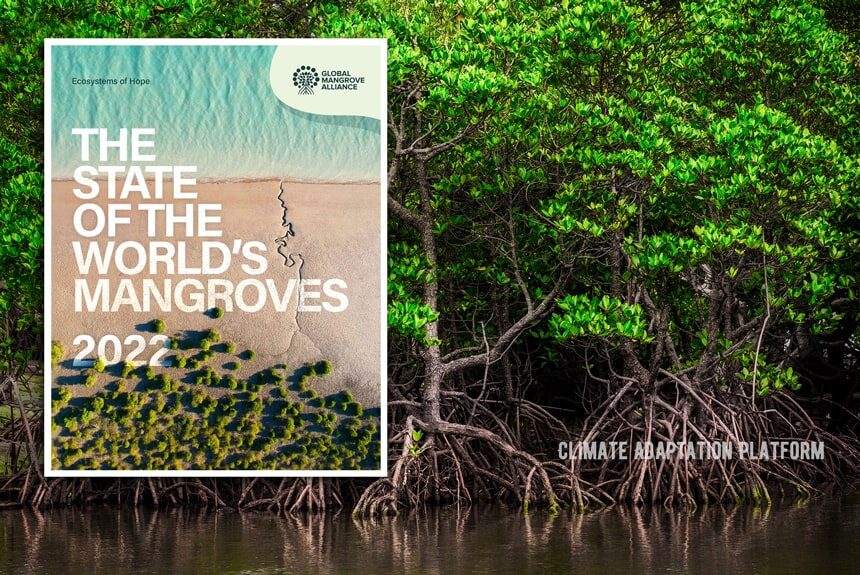As the world begins to understand the value of Mangroves in fighting climate change and its other co-benefits for biodiversity and supporting livelihoods, global initiatives emerge to protect the mangrove forests, and programs to restore them in areas where these coastal forests are in decline and stop the losses.
The Global Mangrove Alliance (GMA) annual report “The State of the World’s Mangrove” compiles the most current information about mangrove forests from a collaboration between NGOs, governments, academics, and communities and what’s being done to stop the severe depletion of mangrove forests in many regions across the world which impacts the local communities who relies on it for livelihood and coastal protection.
The GMA is a joint effort of more than 30 organizations working to accelerate mangrove conservation and restoration efforts worldwide. Their report shares essential new research findings and policy developments and shines a spotlight on mangrove restoration, including research, tools, and stories from the field.
Accelerating the action on mangrove protection and ensuring its long-term security for the people who depend on them has led the Alliance to revise its goal for 2030, which can be summarized in six words: halt loss, restore half, and double protection.
Halting loss means bringing losses to zero by 2030. This means preventing the loss of 168 square kilometres of mangroves. Restoring half means restoring some 4,092 square kilometres of mangrove losses recorded since 1996.
The report highlights the remarkable benefits of protecting and restoring mangroves:
- Preventing just 1% of mangrove loss can lock away 200 million tonnes of carbon. Restoration of mangrove forests since 1996 absorbs and secures 1.27 gigatons of CO2 in soil and aboveground biomass, equal to 520 million barrels of oil or the annual emissions of 49 million cars in the USA.
- The GMA goal of “restoring half” of the 8,183km2 by 2030, particularly in Southeast Asia, could result in an additional 25 billion commercial marine fish and shellfish and benefit 4.1 million small-scale fishers and countless communities that rely on mangroves for their livelihoods.
- Mangroves prevent more than $65 billion in property damages from storms and reduce flood risk to some 15 million people yearly.
- Mangroves are the planet’s most efficient natural carbon capture and storage systems. They currently store carbon equivalent to over 21 billion tons of CO2.
Central to this report is the updated global map of mangroves from the Global Mangrove Watch (GMW) team, which updated it to 2020.
The new map offers comprehensive and more reliable data on mangrove coverage, showing 147,000 square kilometres of mangroves globally and the losses over time. They indicate a loss of 11,700 square kilometres since 1996, but there are also significant gains seen in the river mouths and deltas, which puts the estimated net loss of 5,245 square kilometres since 1996.
Despite a significant reduction in mangrove losses rate – the average losses at 66km2 or 0.04% per year over the last decade, the report calls for continued mangrove conservation action to stop further loss, protect what remains, and restore what has been lost.
Read the entire report by clicking on the link provided in the “Source” below.
Source:
Leal, Maricé and Spalding, Mark D (editors). (2022). The State of the World’s Mangroves 2022 [PDF File]. Global Mangrove Alliance.



Leave a Reply